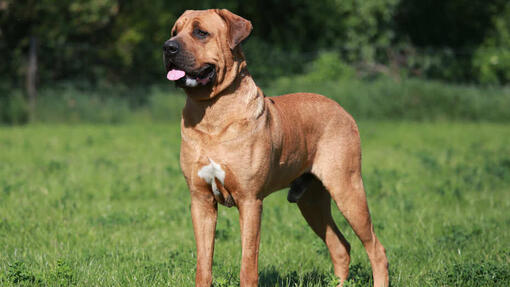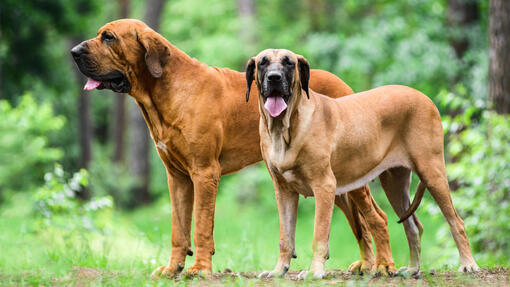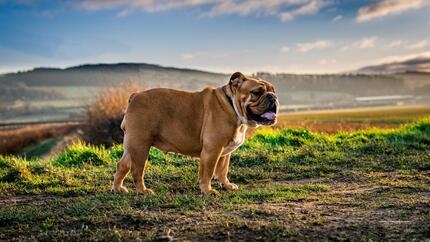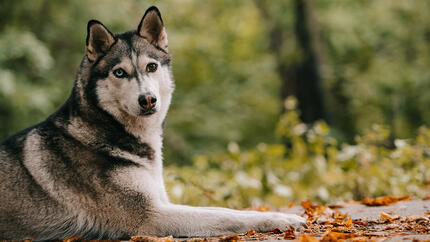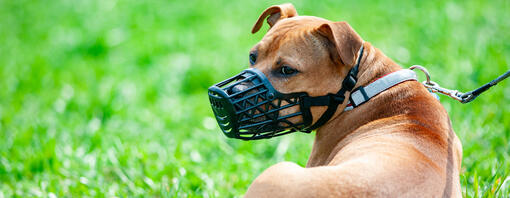
In 1991, the UK government brought in legislation prohibiting certain dog breeds. This was in response to a number of incidents involving a spate of attacks by certain types of dog, on humans.
Part of this legislation is known as breed specific legislation. This breed specific approach is questioned by some people, because over the 30+ years this legislation has been in place, dog attacks have not decreased and the training a dog receives and how it is brought up can be just as important when looking at causes of aggression. So, what are the illegal dogs in the UK? And why are they illegal?
The Dangerous Dog Act 1991
The Dangerous Dog Act is an act created by the government on the 25th of July 1991, and there are two main parts to it. Section 1 is there to prohibit a person from owning a dog belonging to certain breeds (or type) that had originally been bred for fighting. It also makes it illegal to sell, breed, give away or abandon one of these dogs. In addition to breed specific legislation, there is also Section 3, which states that it is a criminal offence for the owner or person in charge of any dog to allow the dog to be ‘dangerously out of control’.
If the dog injures a person, it may be seized by the police, and penalties can include a personal sentence, a control order being placed on the dog, or a ban on keeping dogs.
In respect of Sct 1, the original legislation ordered the mandatory destruction of dogs on the banned breed list. The Dangerous Dogs Act 1997 amended this mandatory destruction order so that a dog found guilty of looking like a banned breed could be exempted if, having gone through the court system, it passed a behavioural assessment and agreed to adhere to several strict rules.
These include that the dog must be neutered, microchipped (and with up to date information), have third party insurance and be muzzled and on a lead at all times in a public place. The owner had to be deemed to be a right and proper person to look after the dog, to make sure the dog was kept secured within their property, and to comply with the regulations. The dog must be kept at the owners home and could not be bred from, rehomed, sold, or have ownership transferred.
Why are some breeds banned in the UK?
Certain dog breeds developed reputations for being more aggressive and responsible for more serious injuries to people than others. Breed specific legislation, banning certain breeds, was brought in to try and prevent or at least reduce the number of dog attacks on people.
What dogs are illegal in the UK?
There are currently four illegal dogs in the UK. Those are Pit Bull terrier, the Japanese Tosa, the Dogo Argentino and the Fila Brasileiro.
The Pit Bull Terrier
For centuries Pit Bulls were bred for blood sport, usually these were fights to the death like bull and bear baiting, where a group of dogs were set against bigger animals in a pit. These ‘sports’ were made illegal in 1835. Following this ban, Pit Bulls were bred to take part in dog fights. As a result, the breed gained a reputation, which many people now argue is unfairly based upon the actions of a handful of unethical breeders. Unfortunately, it was a series of attacks involving the Pit Bull type that ultimately led to the instigation of the 1991 Act, therefore pronouncing "the type known as the American Pit Bull Terrier" to be one of the illegal dogs in the UK.
Japanese Tosa
The Japanese Tosa, was and still is, a popular fighting dog in Japan. Japanese rules meant that dogs were not allowed to make any noise in the pit, so the Tosa is said to have been able to fight in complete silence.
In the 1800’s the Tosa was bred with various other breeds such as the Bulldog and Mastiff to produce a dog that was heavy, agile, and powerful. Its breeding as a fighting dog has led to the breed being banned in the UK – despite there never being more than a handful (if that) in the country. The Tosa is also banned in many other countries.
Dogo Argentino
The Dogo Argentino was bred for big-game hunting, as well as for its bravery and protective instincts. These behavioural traits, together with its large, muscular, powerful build, led to the Dogo Argentino being banned in the UK. However, this dog is not for anyone other than a breed expert due to the dog's strength, intelligence, and game tendencies. This is another reason why the Dogo Argentino isn’t just illegal in the UK, but in several other countries worldwide.
Fila Brasileiro
The Fila Brasileiro, which is more commonly known as the Brazilian Mastiff, is a large dog bred in Brazil. Whilst the breed is commended by Brazilians for its loyalty, the Fila Brasileiro has become known to have aggressive tendencies, plus is intelligent and very strong.
The breed was used originally as a hunting and working dog. They are not known to be attack dogs, but catch dogs, meaning they can catch their prey and hold it at bay until the hunter arrives. The breed is still used on farms to protect herds and to catch predators. These strong hunting and protection instincts, coupled with their size and strength have resulted in it being banned in many countries.
What if I own a banned breed in the UK?
If you own a banned dog in the UK then the police can take them off you, even if they are well behaved. If you’re convicted of owning an illegal dog, the court wil decide on what penalty they see fit. This could include a fine, a community order, a prison sentence (and any combination of these) and presumed destruction of the dog.
However, if you can provide evidence that the dog is safe, despite it being an illegal breed or type, then you can apply to get a certificate of exemption. If proven to the court’s satisfaction, along with proof that you are a responsible enough person to look after the dog and keep it safe, means you will be allowed to keep it under a Conditional Destruction Order. These conditions include neutering, third party insurance, ensuring the dog is muzzled and on a lead at all times in public, and you will not be permitted to sell the dog, give it away or rehome it. If any of these conditions are breached, the destruction order will apply.
The subjects of the Dangerous Dog Act Sct 1 (BSL) and what makes dogs ‘dangerous’ are heavily debated. It has long been suggested that irresponsible owners are to blame for the tarnishing of some breeds, while others argue that generations of breeding for behaviours such as aggression, result in certain breeds being inherently more dangerous than others. These differences in opinion will continue to be discussed, although it seems unlikely that breed specific legislation will be repealed anytime soon.
Is the American XL Bully illegal?
Not yet, but the UK government has announced on the 15th of September their intention to add the American XL Bully to the list of dogs banned under the Dangerous Dogs Act 1991 Sct 1 before the end of 2023. Since then, the government have provided limited information regarding their plans to make the XL American Bully illegal.
Since then, the government have provided limited information regarding their plans to make the XL American Bully illegal. This includes first defining what an XL Bully actually is – as like the Pit Bull, it is not a registered breed in the UK and so there is no breed standard.
What to do if you own an American XL Bully?
If you own an XL, keep checking the official Government News page for updates. Until an official announcement is made your dog is not illegal and is safe to keep. The government have also said that there will be an ‘amnesty’ where existing dogs can be exempted and added to the register. However, with legislation looming, owners should start to prepare their dogs for the restrictions that are certain to come and any assessments that may also be necessary in the future. This includes getting them used to wearing a muzzle (and walking in a muzzle), having unknown people scanning their microchip, being measured with a tape measure, and generally being friendly and happy to interact with people.
Also start collecting information that show you as a responsible owner such as a record of puppy/training classes, record of vet visits, endorsement from any other professionals or neighbours etc.
If your dog is not neutered or spayed, consider having this done in your own time rather than wait for the law to insist on it.
Keep an eye out on the start of the transition period as announced by the Government. This is when owners of American XL Bully must come forward. Failure to do so will be considered a criminal offence.
If you are concerned about your dog's behaviour or your dog is acting aggressively, do not try and deal with canine aggression yourself. Talk to your vet instead and ask them to refer you to an accredited behaviourist who has experience of large bull breeds. You can also find behaviourist help by looking at the websites The UK Dog Behaviour and Training Charter or else ABTC.
Further information regarding the government's plans for American XL Bully can be found on their site.
Will the ban of American XL Bully affect owners of American Bulldogs?
It is unclear how this will affect the ownership of all American Bulldogs because the XL is a variation of this dog breed and as yet, there is no indication of how the XL Bully will be defined. So it is important to keep an eye on any future announcements from the Government.
That’s our guide on what dogs are illegal in the UK. If you want to know more about specific dog breeds why not take a look at our article, top 10 most popular dog breeds, next.



